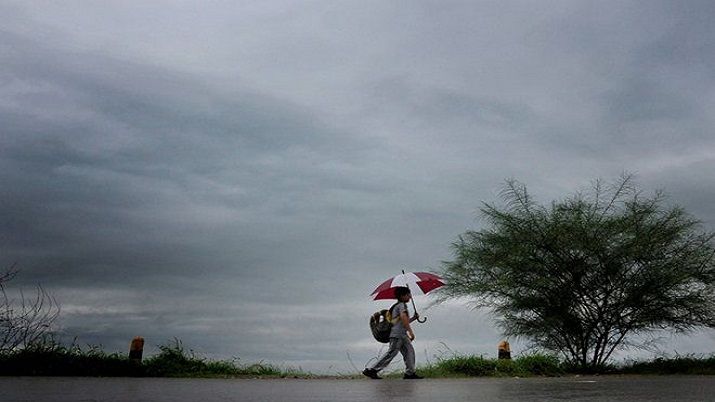
Monsoon set to begin its retreat this week; 8 states recorded rain deficit

The India Meteorological Department (IMD) has said that the withdrawal of the southwest monsoon is likely to commence this week. This year, the country received bountiful rainfall throughout the season, except in June.
The country recorded normal rainfall over major geographical areas. Between June 1 and September 17, the all-India rainfall was 865.4 mm, 7 per cent above normal.
But eight states — Uttar Pradesh, Bihar, Jharkhand, Delhi, Punjab, Tripura, Mizoram and Manipur — have recorded rainfall deficits, as on September 17.
Mixed bag
As far as rainfall stats for the season are concerned, it’s a mixed bag for the north-western states. Between June 1 and September 19, Uttar Pradesh (449.3 mm), Delhi (326.2 mm) and Punjab (328.6 mm) have suffered ‘deficits’ of 37 per cent, 38 per cent and 21 per cent, respectively. Jammu & Kashmir (550 mm), Uttarakhand (1035.2 mm), Himachal Pradesh (627.6 mm), and Haryana (337.7 mm) have witnessed more or less ‘normal’ rains, recording respective slight-deficits of 5 per cent, 8 per cent, 11 per cent, and 18 per cent in the same duration.
The usually dry Rajasthan (566.4), on the other hand, has enjoyed ‘excess’ precipitation this season, registering 34 per cent more rainfall than its seasonal average.
Also read: Monsoon fury continues: Heavy rains predicted in coastal states over next 5 days
Overall, the north-western region as a whole — which includes plains as well as the western Himalayan region — has collectively recorded rainfall worth 538.7 mm, which is about 4 per cent below its long-period average (563.6 mm) for the monsoon season.
The southwest monsoon lasts between June and September. During these four months, the country receives over 70 per cent of its annual rainfall. The monsoon is crucial for the country’s kharif crops, water reserves and economy.
Withdrawal more or less on time
From early September, the withdrawal of the south-west monsoon normally starts from the extreme northwest parts of the country, mostly from west Rajasthan.
In its weather bulletin issued on Sunday, the IMD said, “Due to the anti-cyclonic flow established over northwest India at lower tropospheric levels, dry weather is likely over west Rajasthan, Punjab, Haryana, Chandigarh and Delhi during the next five days. Hence, the conditions are becoming favourable for the withdrawal of the south-west monsoon from parts of north-west India during the next three days.”
The IMD considers a few criteria at the time of its withdrawal. In September, if there is a formation of an anticyclone over north-west India, a reduction in rainfall over this region for five consecutive days and a substantial reduction in moisture, then the IMD declares the commencement of monsoon withdrawal.
Conditions are becoming favourable for the withdrawal of the south-west monsoon from parts of northwest India. In the next two days, the monsoon will start its withdrawal journey from Rajasthan and some parts of north India.
The ‘normal’ date for the beginning of monsoon withdrawal from Rajasthan is September 17, while complete withdrawal from the entire India happens by around October 15.
While the withdrawal has been delayed by a significant margin in the last three years, the commencement of its departure is only slightly behind schedule this time.
Rains in Maharashtra
From Maharashtra, the monsoon will commence withdrawal in the next eight to 10 days, according to IMD officials.
A low-pressure area is developing in the Bay of Bengal. Consequently, Maharashtra will experience medium to heavy rainfall along with lightning in the Vidarbha area between September 20 and 22. Madhya Maharashtra and Marathwada regions will also experience rainfall on these days. Mumbai, Thane, and the entire Konkan region will experience a reduced intensity of rain.
Also read: Business in brief: Market recovery makes investors richer; monsoon brings hope
This year, the monsoon entered India on May 29 from Kerala. The country experienced a 7 per cent surplus rain, while Maharashtra received 26 per cent surplus spots of rain. The low-pressure areas mainly benefit central and south Indian states. However, the north and north-eastern states received deficit rainfall this year.

